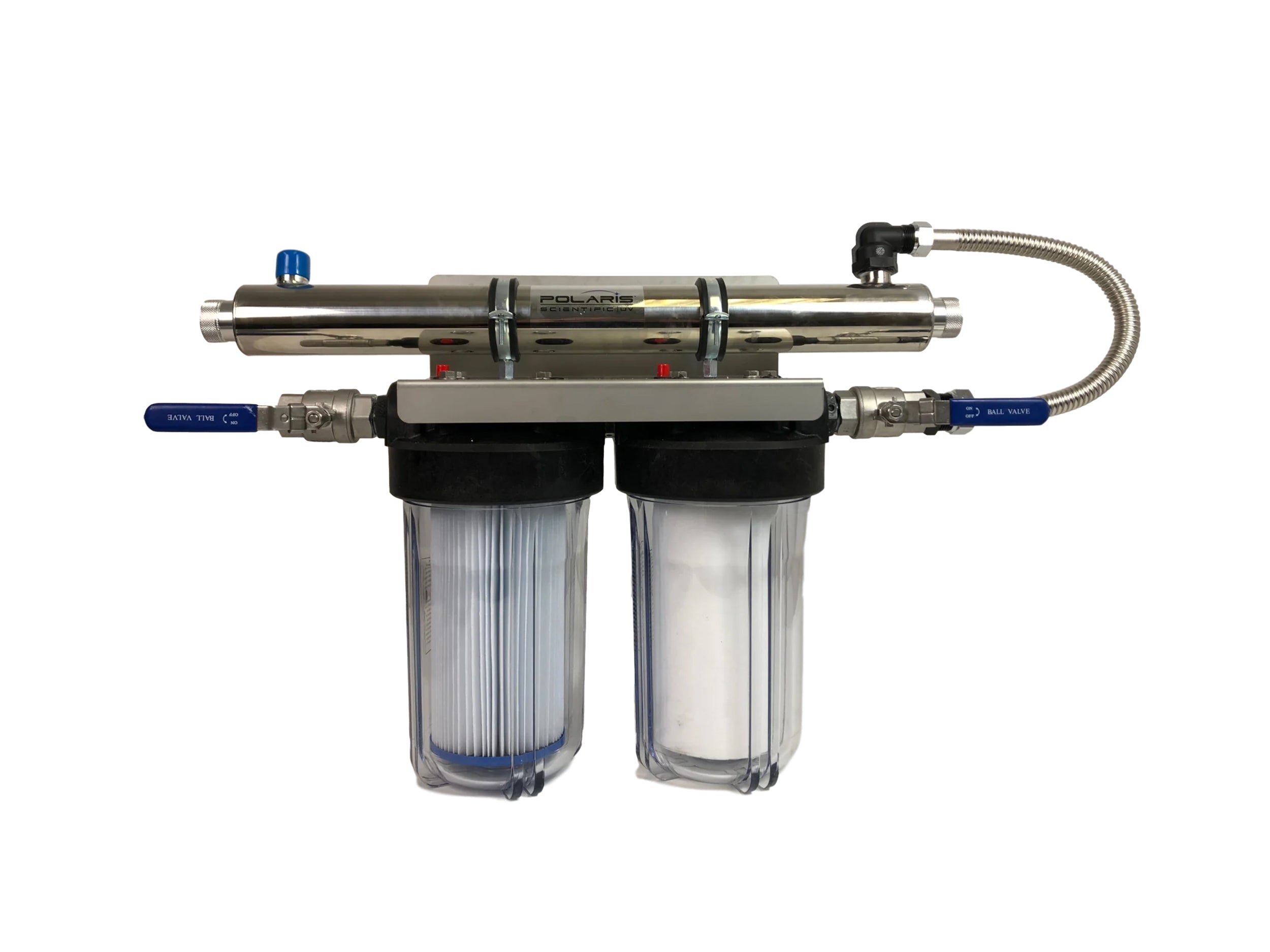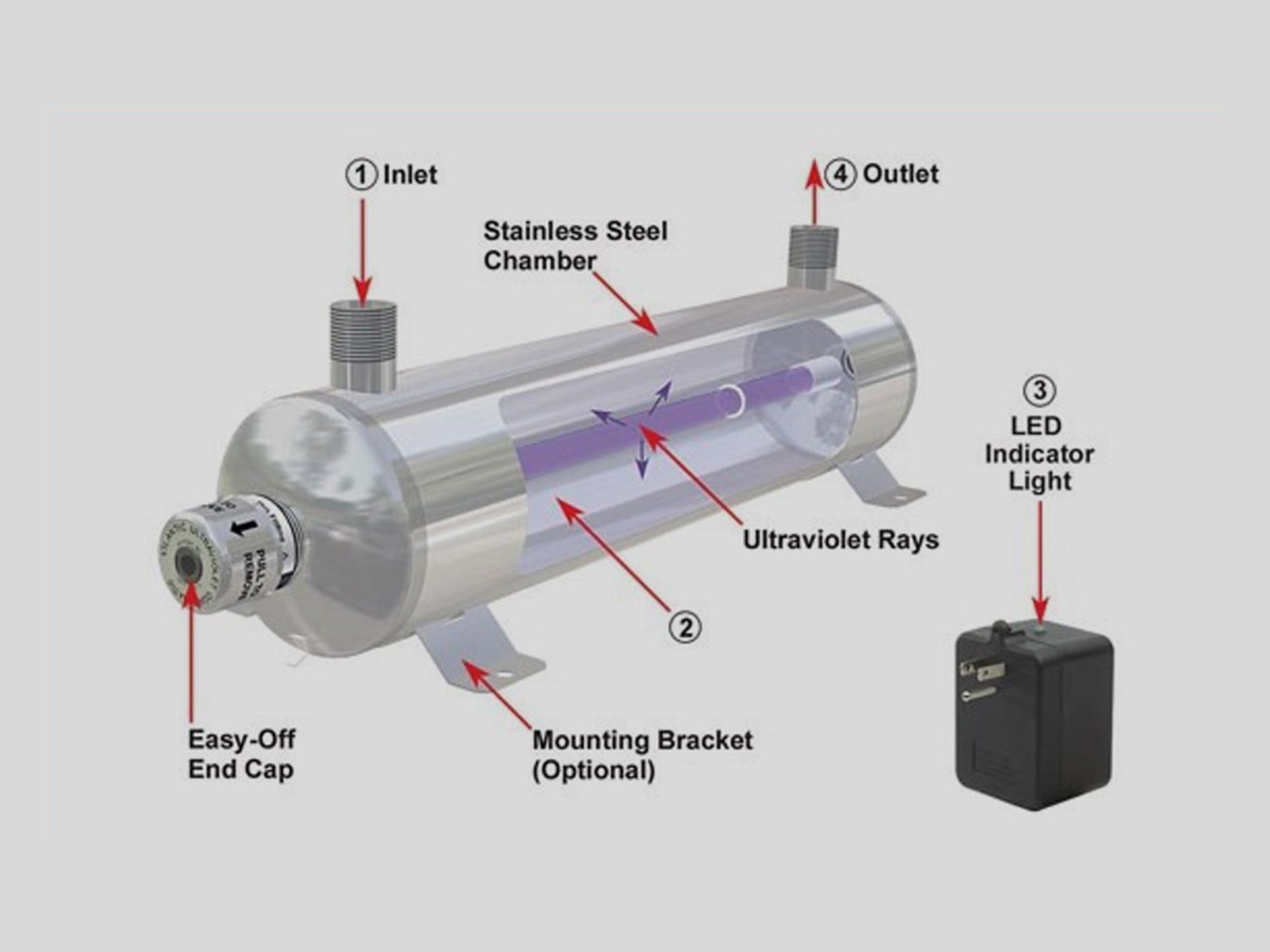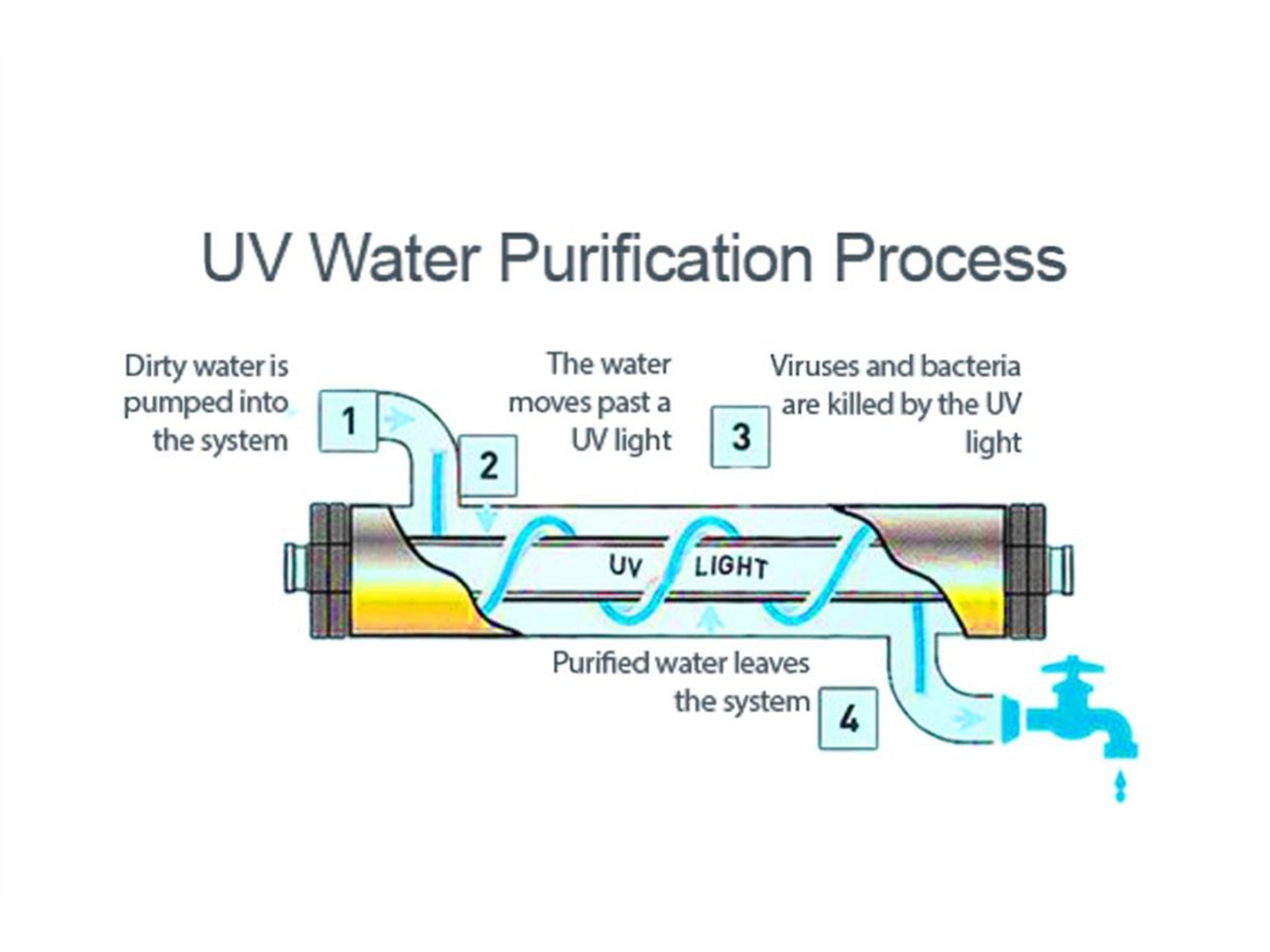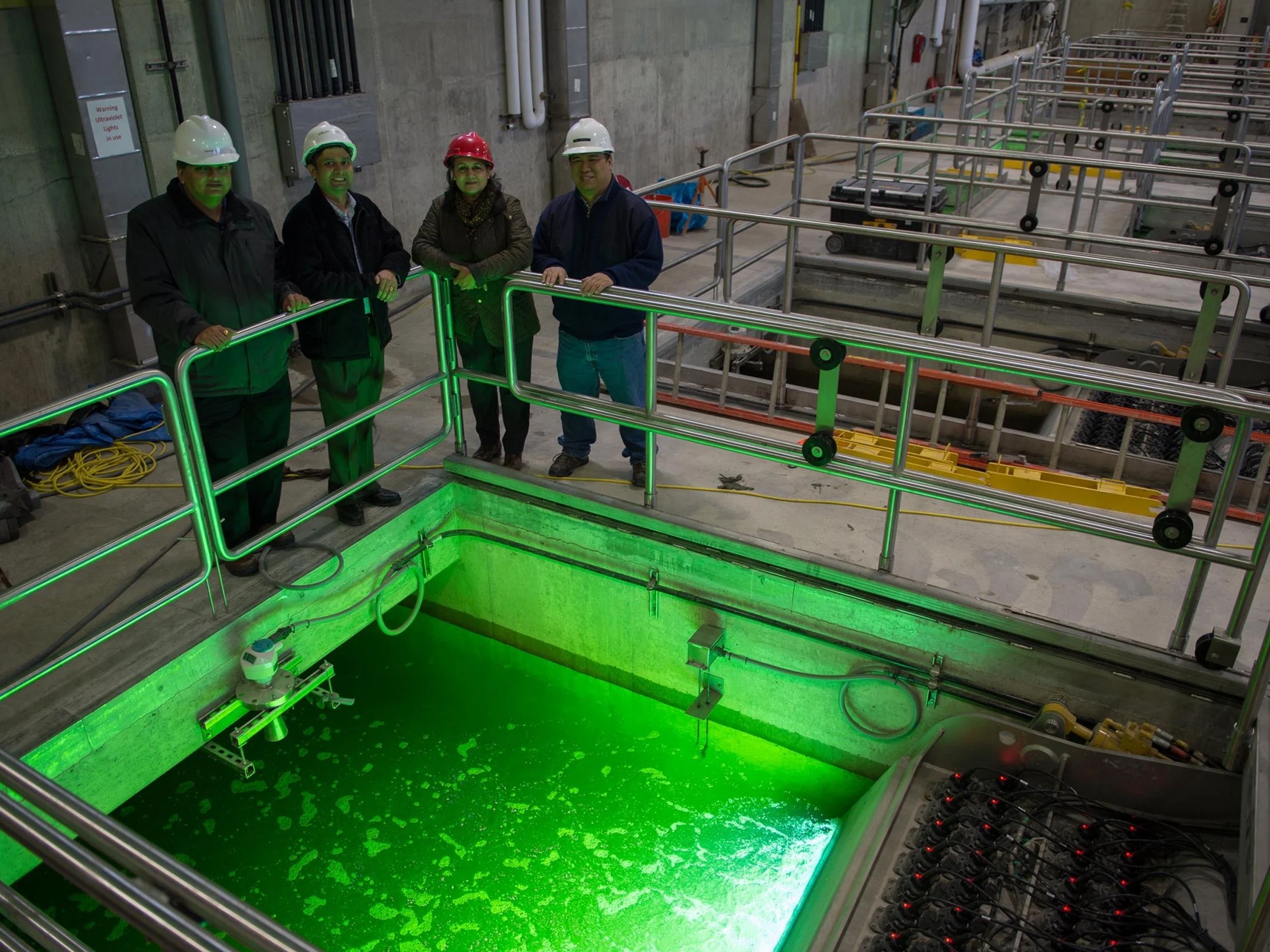How Ultraviolet Systems Work in Water Treatment
The use of ultraviolet (UV) systems in water treatment has become an effective solution to ensure water is free from germs and bacteria without adding chemicals.
This technology is particularly relevant for companies like Watermart, which focuses on the distribution of water treatment equipment in Indonesia, in providing clean water solutions that are safe for consumption. With its key advantage of not requiring the addition of chemicals, UV systems are an attractive option for many users looking for a more natural and less environmentally damaging method of water treatment.
This article will explain in detail about how ultraviolet systems work in water treatment, making this information extremely useful for anyone looking for effective and efficient water treatment solutions.

Understanding Ultraviolet System
Ultraviolet systems are water treatment technologies that use UV light to kill or inactivate harmful microorganisms that can be present in water. This technology works by exposing the water to be treated to ultraviolet radiation, which has the ability to damage the DNA of microorganisms, thus preventing them from reproducing and causing disease. The specialty of ultraviolet systems lies in their ability to provide disinfection solutions without changing the taste, color, or pH of the water, as opposed to chemical disinfection methods that may leave a specific taste or odor in the water.
UV light, specifically at a wavelength of 254 nm, is highly effective in inactivating many types of microorganisms, including chlorination-resistant bacteria, viruses, and protozoa, such as Cryptosporidium and Giardia. This makes UV systems a valuable addition to existing water treatment systems, or as a stand-alone solution in certain applications where the use of chemicals is to be avoided. In addition, UV systems do not require transportation, storage, or handling of hazardous chemicals, reducing risks to operators and the environment.
UV systems are also unique in that their effectiveness is not affected by fluctuations in treated water quality, such as turbidity, color, or mineral content, as long as the water has undergone adequate pre-treatment to remove large particles that can shield microorganisms from UV exposure. This provides an added advantage in the use of UV as a consistent and reliable water treatment method.

Main Components of Ultraviolet System
UV systems, which were developed to inactivate harmful microorganisms without the use of chemicals, rely on various key components for their effectiveness.
The following is an explanation of the key elements that form the core of a UV water treatment system, each playing a vital role in the water disinfection process.
-
UV Lamp: The ultraviolet light source that forms the core of the treatment system. These lamps are usually made of quartz to maximize the transmission of UV light. The function of UV lamps is not only limited to the killing of microorganisms but is also very important in determining the energy efficiency and overall effectiveness of the system. UV lamps are designed to have a long service life, typically around 9,000 to 12,000 hours, thus minimizing the need for frequent lamp replacement.
-
Reactor: The container in which water flows and is exposed to UV light from the lamp. The design of the reactor ensures efficient UV exposure to the water. The reactor can be made of various materials, including stainless steel, which not only ensures durability but also maximizes the reflection of UV light, thus increasing the effectiveness of disinfection. The reactor design also takes into account the water flow rate, with the aim to optimize the contact time between water and UV light.
-
Electronic Ballast: Regulates the power required for the UV lamps, ensuring they operate at optimal efficiency. The electronic ballast is in charge of controlling the electric current to the UV lamp, ensuring the lamp burns steadily and efficiently. In some systems, the ballast can be adjusted to regulate the intensity of the UV light, allowing customization to different water conditions and different disinfection needs.
In addition to these main components, UV systems can also be equipped with various sensors and automatic control systems to monitor system performance in real-time. These sensors can detect UV light intensity, water clarity, and other operational parameters, allowing for automatic adjustments or early warnings if system performance falls below expected standards. This automatic control not only improves system reliability but also eases maintenance and operations.

How Ultraviolet Systems Work
The way ultraviolet systems work in water treatment involves a series of steps designed to ensure the effective elimination of harmful microorganisms without adding chemicals to the water. Here is a breakdown of the process, showing how UV systems offer an advanced and effective solution to modern water treatment needs.
-
Initial Filtration:Before entering the UV system, the water is first filtered to remove any large particles that could block the effectiveness of the UV light. This step is essential to ensure that all microorganisms are directly exposed to the UV light without any protection from particles floating in the water. This initial filtration also helps to reduce turbidity, increasing the transmission efficiency of the UV light to the microorganisms.
-
UV exposure: The filtered water flows through the reactor and is exposed to UV light from the lamp. The UV light damages the DNA of the microorganisms, stopping their ability to multiply and cause disease. This process happens at a molecular level and is very fast, so the water can continue to flow through the system without the need to stop or slow down. This allows for continuous and efficient water treatment.
-
Monitoring: Modern systems are equipped with sensors to monitor the intensity of the UV light and its effectiveness in cleaning the water, ensuring the treated water is safe for use. These sensors can detect if the UV lamps start to lose strength or if there are problems in the system that could reduce the effectiveness of the treatment. With this monitoring, users can take immediate maintenance or component replacement measures to ensure that the system continues to work properly.
The water treatment process with ultraviolet systems does not produce harmful byproducts, making it an environmentally friendly method compared to traditional water treatment that often uses chlorine or other chemicals. In addition, since UV systems do not add any ingredients to the water, there is no change in the taste, odor, or pH of the treated water. This makes UV systems an ideal choice for applications where the sensory quality of the water is critical, such as in drinking water supply.

Excellence of Ultraviolet System Usage
The use of UV systems in water treatment offers various advantages that make them stand out as today's water treatment solution. Among these advantages, include:
-
High Effectiveness: UV technology is renowned for its exceptional ability to kill up to 99.9% of harmful microorganisms without leaving any chemical residue. This means the UV system can effectively eliminate bacteria, viruses, and other pathogens, ensuring the resulting water is safe for consumption and use in a variety of other applications.
-
Energy Efficiency: Despite their high disinfection capabilities, UV systems require relatively low energy compared to other conventional water treatment methods. This makes it an economical choice, especially in the long run, as it reduces operational costs.
-
Environmentally Friendly:One of the biggest advantages of UV systems is that they do not produce any harmful byproducts. Unlike chemical disinfection methods, such as chlorination, which can produce harmful compounds such as trihalomethanes (THMs) and haloacetic acids (HAAs), UV systems offer a solution that has no negative impact on the environment.
-
Easy Maintenance: Although UV technology is highly advanced, these systems are designed to be easy to maintain. The main maintenance activity involves replacing the UV lamps which only needs to be done periodically, depending on the intensity of use and the manufacturer's specifications. In addition, this relatively simple routine maintenance helps ensure the system operates at maximum efficiency.
In addition to the above advantages, UV systems also offer great flexibility in terms of installation and integration with other water treatment systems. This allows for easy customization according to specific needs and operational scale, from domestic use to large-scale industrial applications. Thus, the adoption of UV technology not only ensures high water quality but also supports efforts in environmental footprint reduction and energy consumption optimization.

Ultraviolet technology offers an effective and efficient solution in water treatment, ensuring water safety and quality without the use of harmful chemicals. In this modern era, where environmental sustainability and health are prioritized, safe and eco-friendly water treatment methods are increasingly sought after. Watermart, as a distributor of water treatment equipment in Indonesia, understands the importance of access to advanced water treatment technologies such as UV systems, in meeting the need for clean water that is safe for consumption. Our commitment in providing high-quality water treatment solutions aims to support the health and well-being of communities, as well as preserve our natural environment.
Contact Watermart today via Whatsapp or Whatsapp.mce-fragment="1" target="_blank" rel="noopener">e-mail for more information on our selection of ultraviolet products and how we can help meet your needs.

.png?width=50&height=50&name=Logo_Watermart_Perkasa-removebg-preview%20(1).png)


.png?width=352&name=typical-water-softener-components-1140x868%20(1).png)